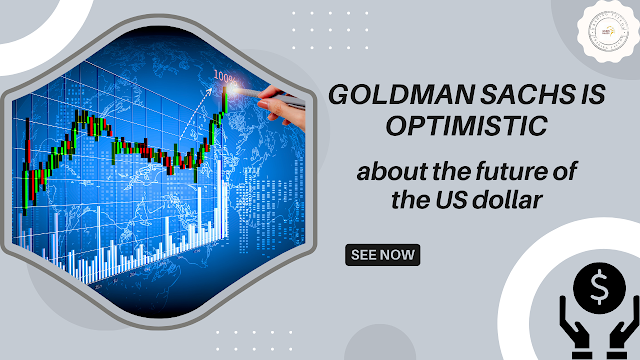 |
| Goldman Sachs is optimistic about the future of the US dollar |
Goldman Sachs is optimistic about the future of the US dollar.
Goldman Sachs economists think the US dollar will keep getting stronger in the short term. This is due to recent data showing more favorable credit conditions & reduced costs in the US, which should lead to a surge for the dollar.
Economic growth in Europe, China, & Japan didn't reach high expectations, so their policy makers took a more conservative approach. This helped the US dollar stay strong compared to other major currencies.
The US dollar is likely to remain strong in the short term due to limited risks of a recession in the US economy & strong global activity. This could lead to a slight decrease in the value of the US dollar, but it is expected to remain strong overall.
The US dollar is expected to continue being supported as a result of the debt ceiling crisis ongoing in Washington, which has seen a more cooperative attitude between the Republicans & Democrats. Despite this, not enough progress has been made to ease the worries of markets. The defensive dollar index reflects this.
The US dollar is currently experiencing a revival, & could continue to climb until more information is available on the progress of negotiations for the debt ceiling crisis. Experts believe the dollar's position may not be affected at this time.
The US dollar is close to its highest level in two months, before important economic figures are released.
The US dollar was steady during European trading Wednesday, staying close to its two-month high from the day before. This is due to the stalled negotiations on increasing the US debt ceiling.
What is the current US dollar index?
The US Dollar Index has stayed the same since yesterday, with a reading of 103.395 against a basket of foreign currencies. This is slightly lower than Tuesday's two-month high of 103.65.
What don't you know about gold trading?
Gold prices have been confusing the markets lately due to conflicting views on whether it will reach record levels or stop rising due to shifts in the economy.
How does the US dollar interact with the debt crisis & Federal Reserve?
Negotiations between political parties to increase the US government's debt ceiling of $31.4 trillion are ongoing, yet little progress has been made & it appears a resolution is not imminent.
With a deadline of the beginning of June, U.S. Treasury Secretary Janet Yellen has warned that there is only about a week left before the Treasury runs out of enough cash to operate normally.
The minutes of the Federal Reserve's May meeting, to be released later in the day, will be studied closely for indications of when the Fed might stop raising interest rates.
Fed speakers over the past week have suggested that US interest rates will stay high for a prolonged period of time.
Dollars & other currencies.
The value of USD to EUR increased by 0.1% & reached 1.0780 before the announcement of the German Ifo Business Climate Index for May, which is anticipated to reflect a slight decrease in trust in Europe's biggest economy.
The U.S. Dollar to British Pound exchange rate rose 0.3% on Tuesday, recovering from a one-month low, after the UK's core Consumer Price Index (CPI) was lower than anticipated for April at 8.7%. Core inflation, not including energy & food prices, was 6.8%, its highest level since 1992.
The Bank of England recently increased interest rates by 0.25%, which suggests that they will need to raise them again in June.
The US dollar rose to 138.64 against the Japanese yen, its highest level in six months, while it fell against other currencies. The US dollar dropped by 0.4% against the Australian dollar to 0.652 & by 1.7% against the New Zealand dollar to 0.6144 after the Reserve Bank of New Zealand raised interest rates but suggested that it could pause its rate hike cycle soon.
